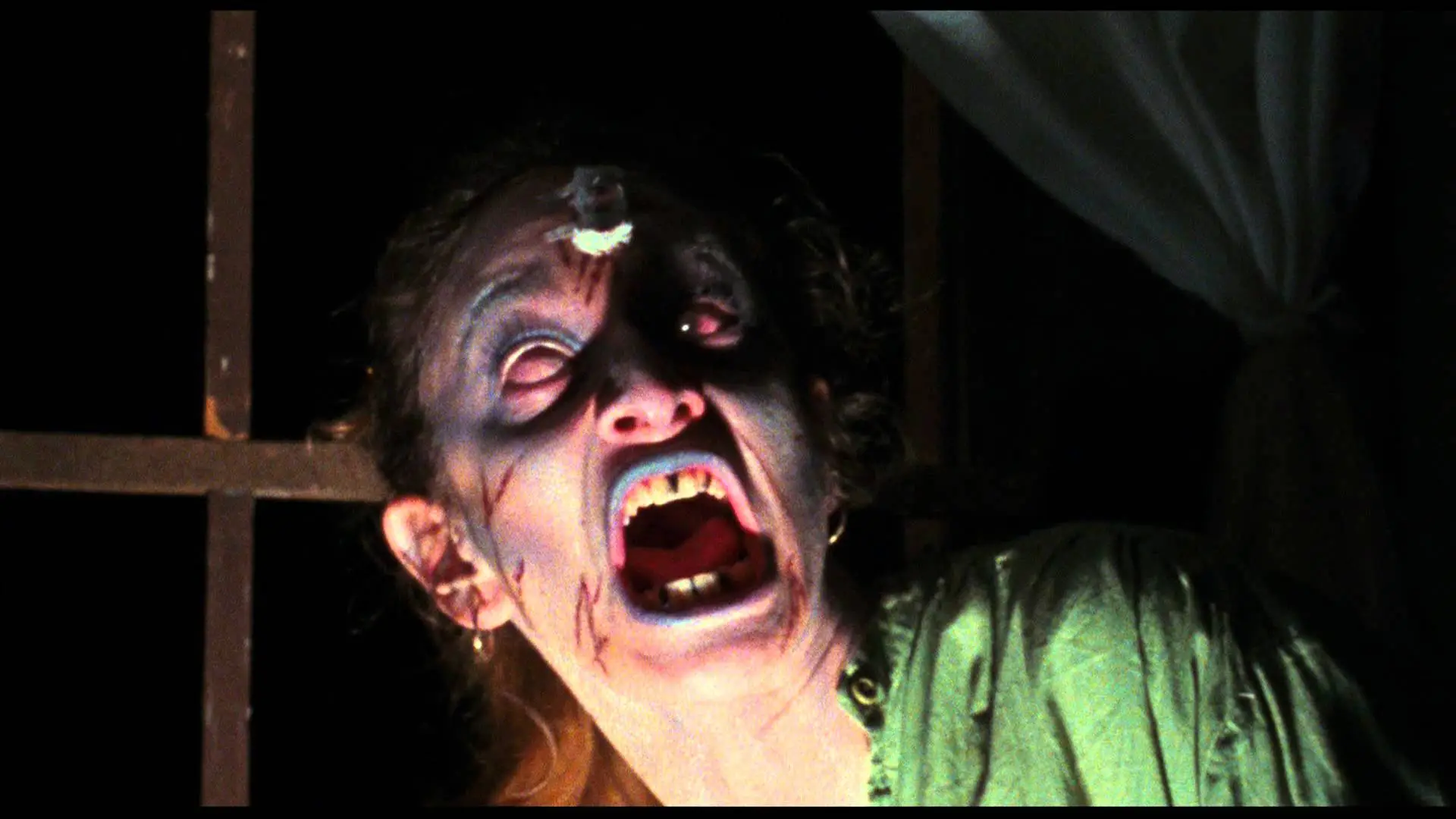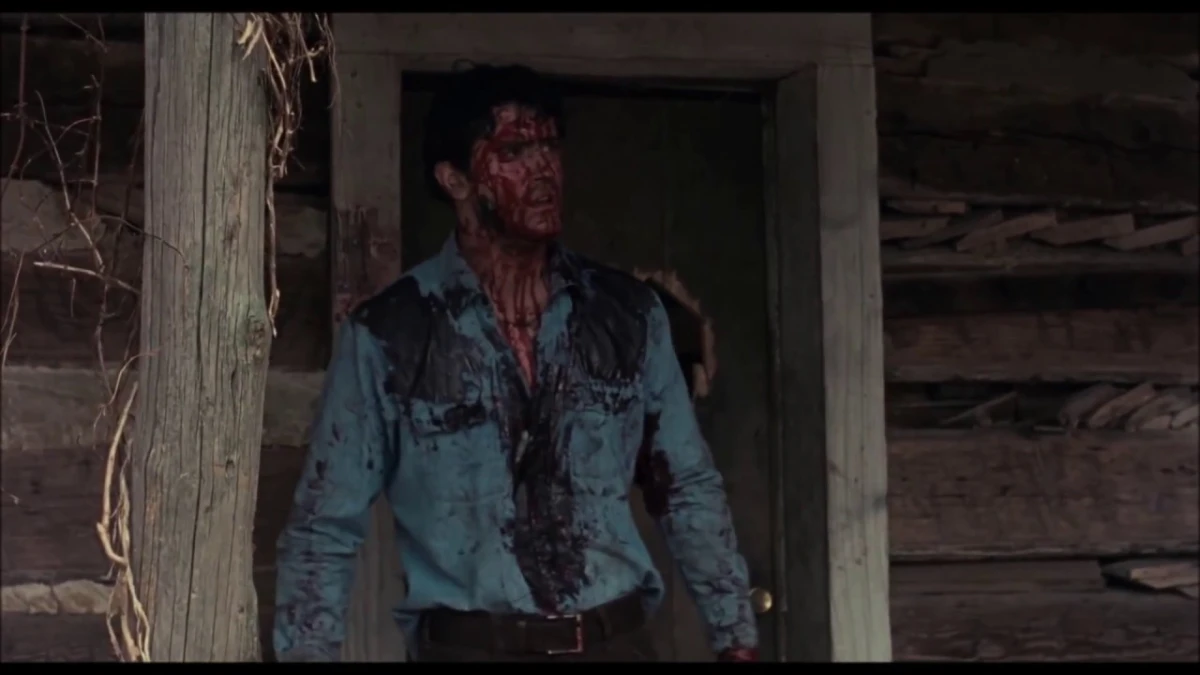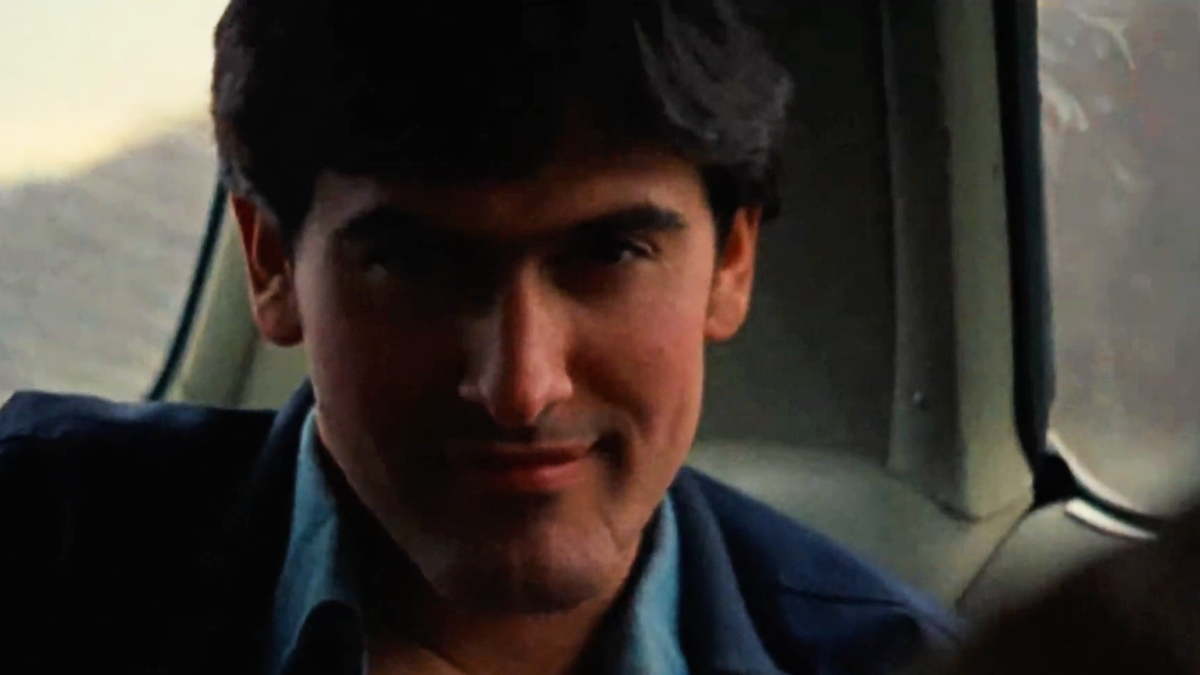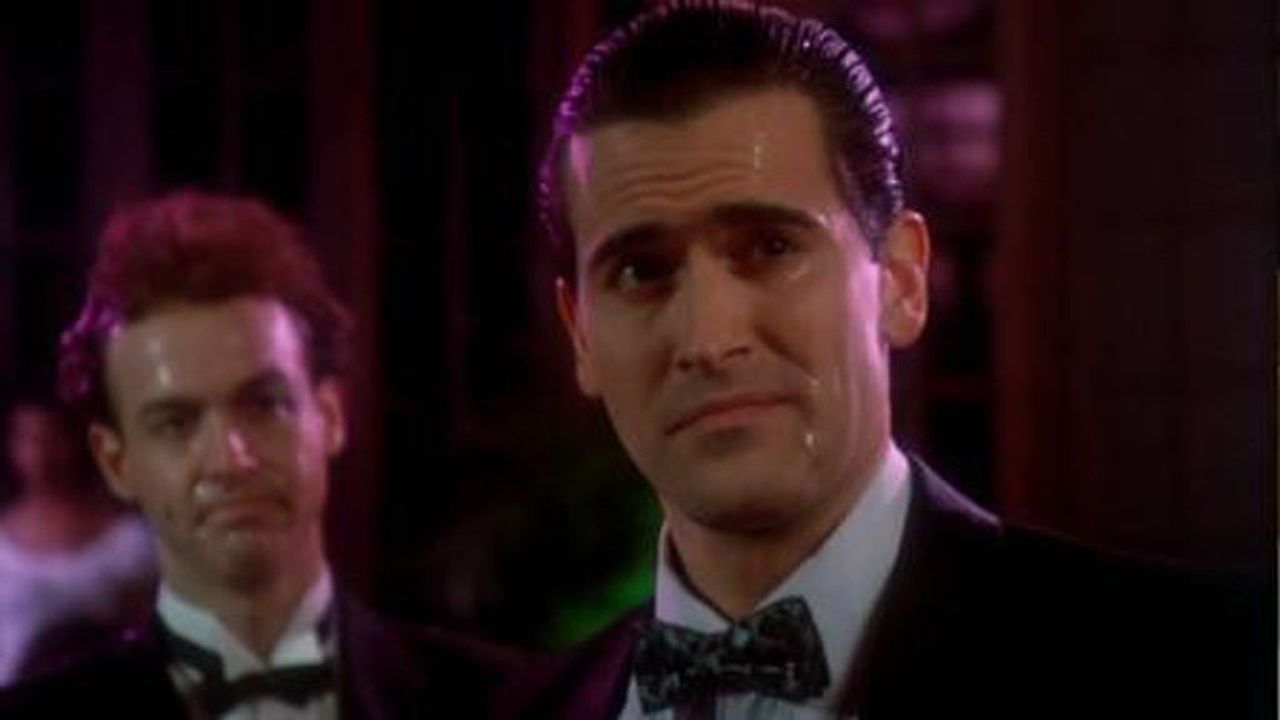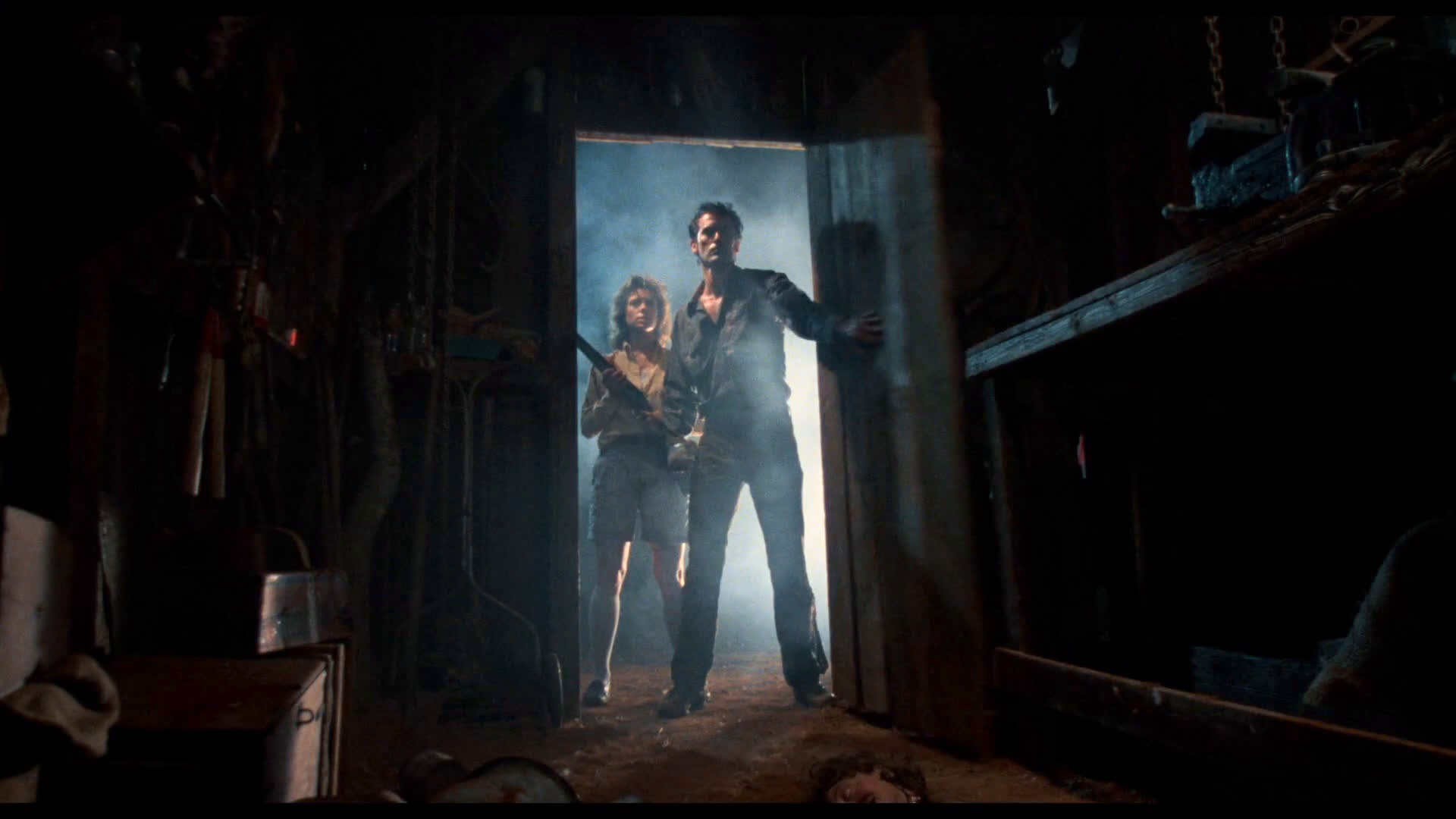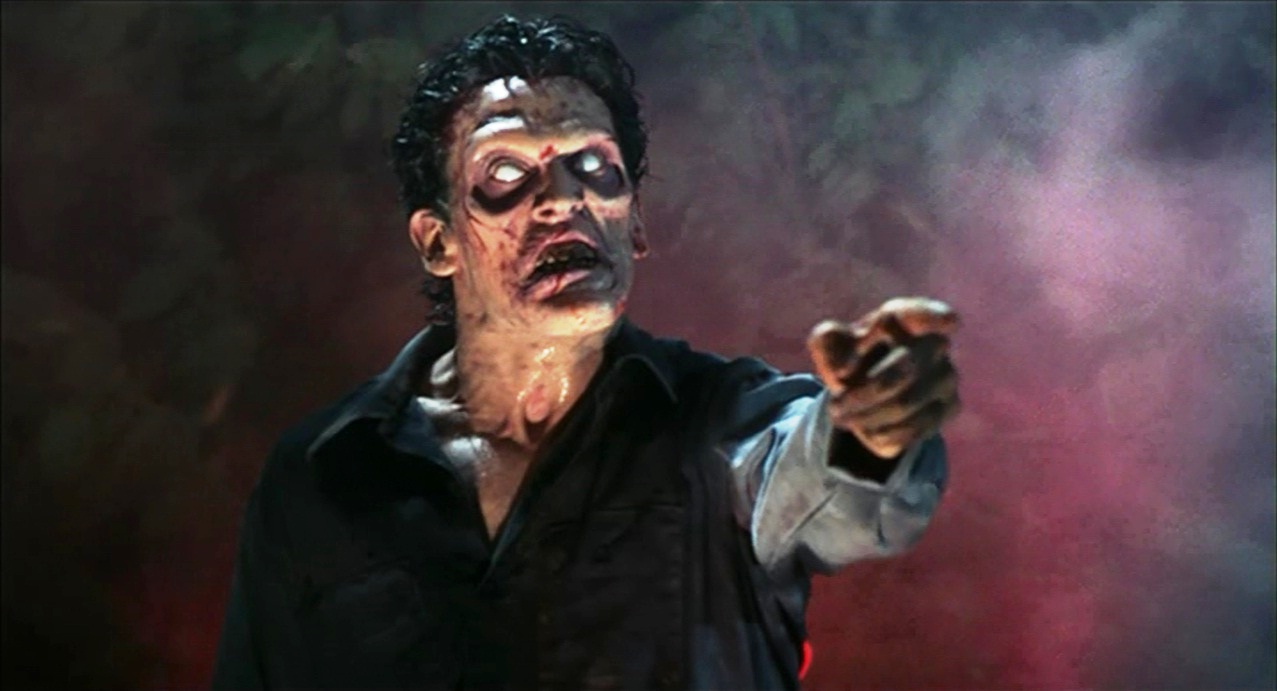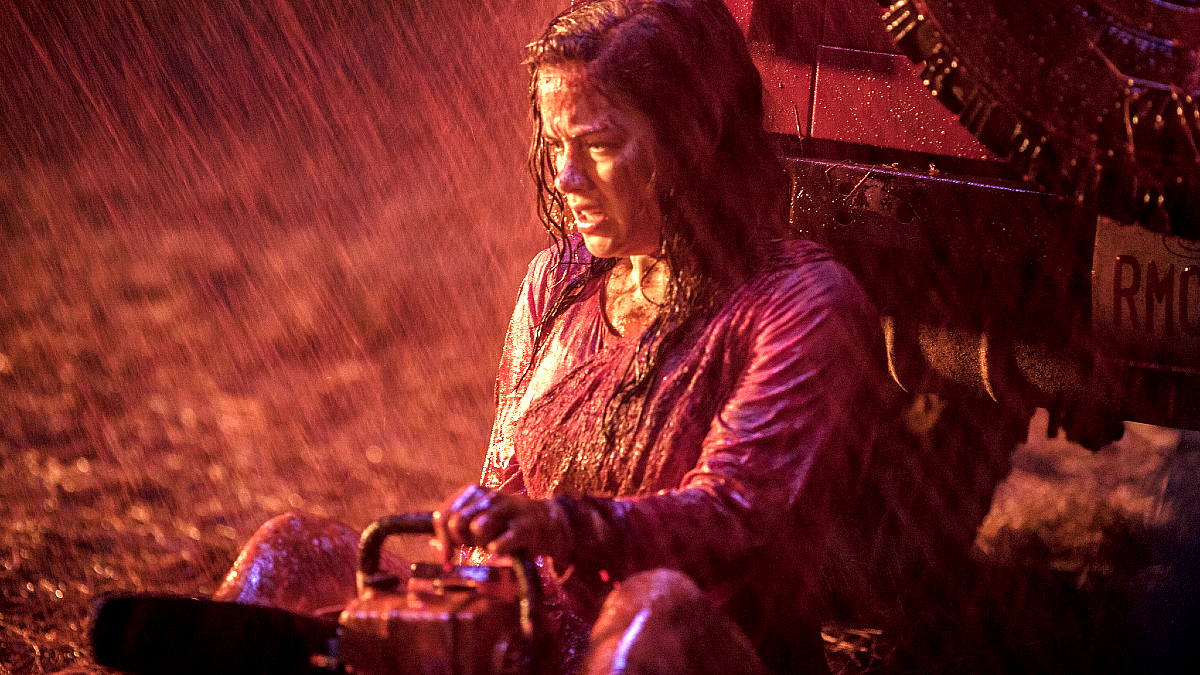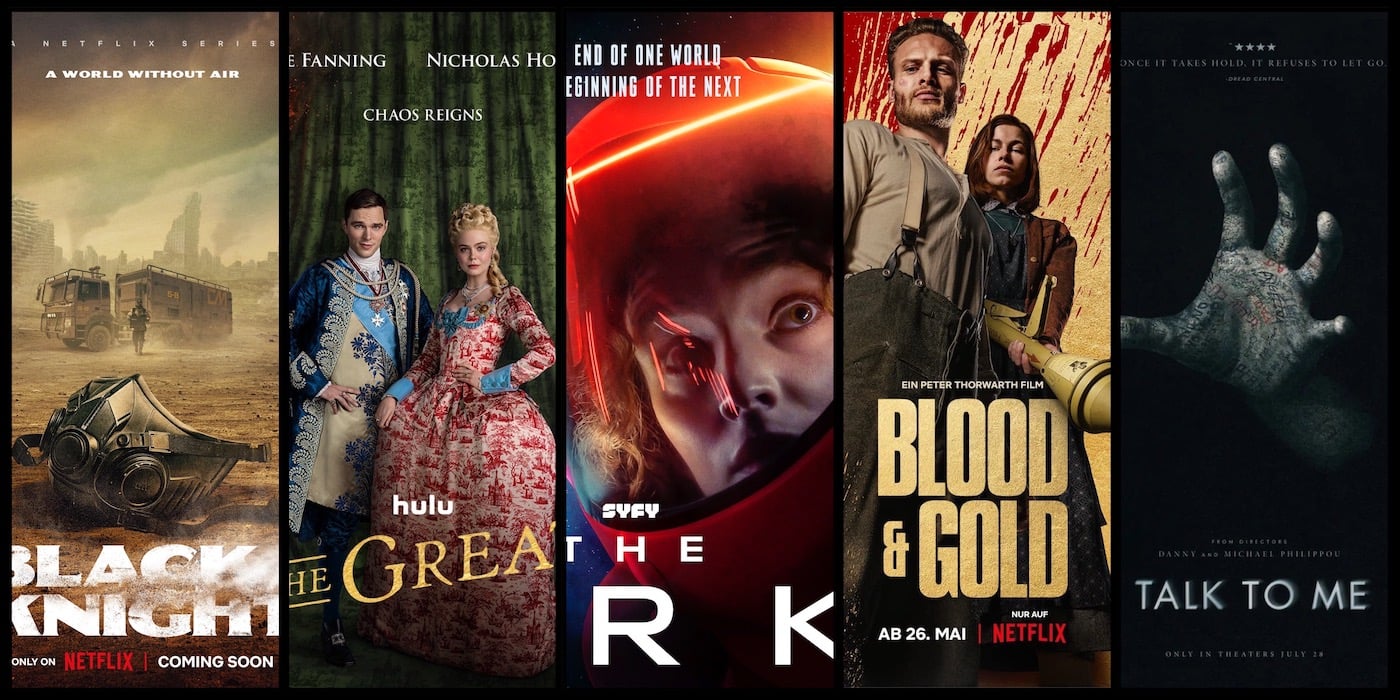Sam Raimi’s Sophisticated Juvenilia – The Evolution of ‘Evil Dead’
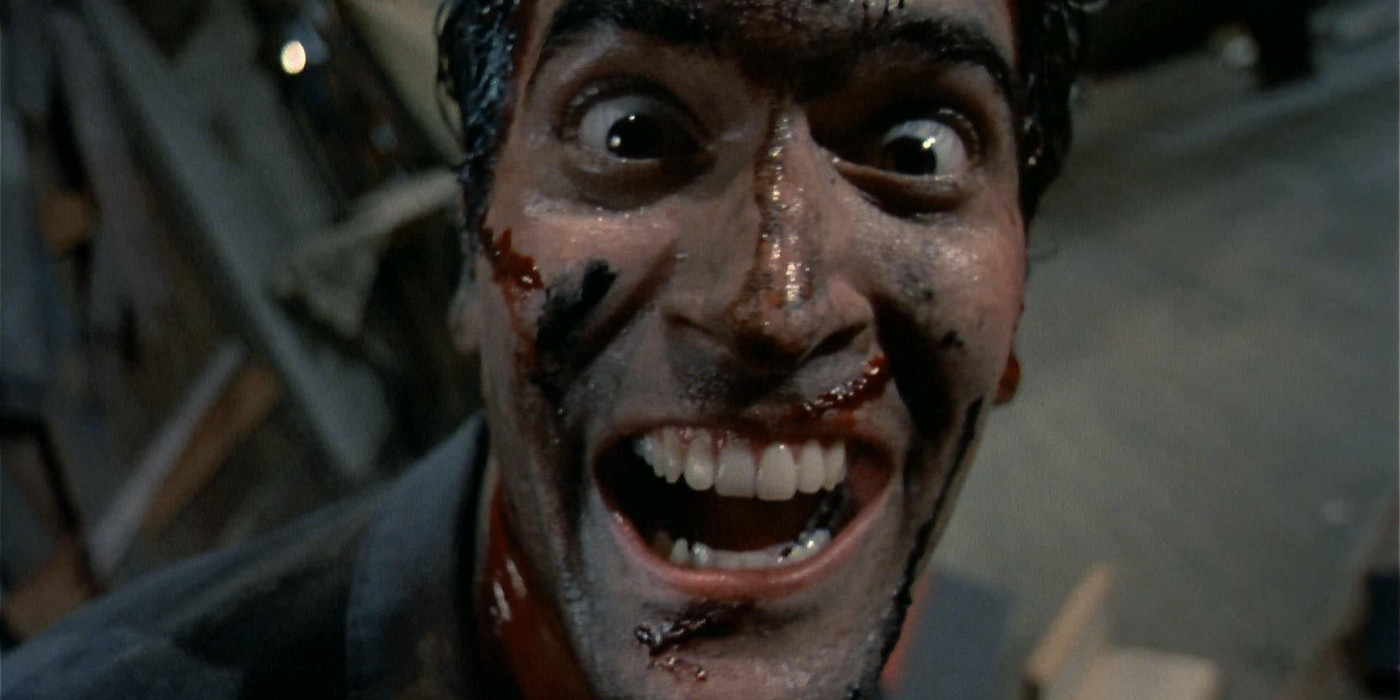
“Evil Dead II is better than the original” is as close to a universally accepted truth as there is in horror. But why is that the case?
Horror opinions are like chainsaw hands–everybody’s got one. And most of us like to take opposing, contrarian opinions just to see if we can argue them. Claiming a horror movie sequel is better than its classic original is a common one. Texas Chainsaw Massacre 2 is better than the original. The Howling 2 is better than the original. A Nightmare on Elm Street: Freddy’s Revenge is better than the original. You get it. People love stirring the pot.
But the pot does not stir when someone says “Evil Dead II” is the best movie in the franchise. That’s not so much viewed as an opinion as it is seen as a matter of fact.
And the question to ask as Evil Dead Rise looms is “why is the second film the favorite?” Because it’s not as though there are any “bad” entries in the realm of Evil Dead. That’s probably another one of the most widely accepted opinions in horror–all Evil Dead is good Evil Dead.
So let’s look at The Evil Dead, its story, and what makes it great on its own. And then let’s analyze Evil Dead II and why it’s so much more than a recreation of the original film.
The Evil Dead and the 1970s
A lot of films and filmmakers go into making a movie like The Evil Dead a reality. However, one thing that has the largest impact on The Evil Dead is the state of horror while Sam Raimi and company consider their first horror feature.
The 1970s is a time of profound earnestness. These are movies that have something to say. The Brood is a movie about the impact divorce has on a family. Invasion of the Body Snatchers similarly speaks to the breakdown of conventional ideas of community. Black Christmas sneaks in a story about the body autonomy of women. And Alien low-key reminds us that freelancing bites and that corporations will kill you if it’s good for the bottom line.
And in the midst of all that earnestness comes The Evil Dead–which isn’t really about anything per se. It’s a gorefest where someone gets sexually assaulted by a tree, people’s skin burns off, and basically, everyone gets possessed and dies. But despite that, the movie is still kind of earnest. It takes about half an hour before things really go wrong. And that first half hour gives us a chance to get to know our wholesome college co-eds.
The result is a comparatively more serious affair than Evil Dead II. And there’s something else going on that’s even more unintentional.
Don’t Try This At Home, Kids
Movies are challenging to make. They are even more challenging on a shoestring budget. And of course, if the filmmakers themselves are relatively new to making movies professionally, that’s what we call the trifecta.
The Evil Dead is notable for many reasons but one reason is that it had a notorious production. They did not raise the maximum funding they’d set out to get. The initial filming location had to be replaced. Equipment got stolen. The living facilities were relinquished before production was completed forcing the cast and crew to sleep in the freezing set. Oh, and the six-week production ran 12 weeks instead.
Some filmmakers believe that The Evil Dead has a certain melancholy quality to it precisely because of the challenging production. Unhappy cast, unhappy crew, and an endless list of unlikely pitfalls arguably translate from set to screen.
And yet…
The Evil Dead is Still a Cult Hit
There is no sequel without a successful original. And, yes, in case you do not know. The Evil Dead remains a cult smash to this day. Despite its seriousness, the film has a lot of things going for it–chief among them is Sam Raimi’s visual narrative. He doesn’t tend to get a lot of credit for his restraint, but it’s worth noting that despite the “every camera trick in the book” approach, Raimi is incredibly savvy behind the camera.
Consider the silent shot of the car slowly driving toward the camera as the sound of banging slowly fades in. A cut to the cabin reveals a bench outside slamming into the house over and over again. Scott walks towards the door, occasionally looking back to his friends. And as he finds the keys to open the door, the bench stops crashing into the cabin. Tracking shot, tight shot on a singular object interspersed with wide group shots and an oner. It’s a cinematic masterwork.
If you remember only one thing about the original film, it’s the cinematography. When the cellar door pops open. How the woods attack Cheryl’s body. The close of Cheryl stabbing Linda in the ankle with a pencil. Despite the on-set challenges, The Evil Dead is like Indiana Jones and the Raiders of the Lost Ark. Even if you take the sound and color away, the audience still knows what’s happening and how the characters feel about it.
Successes, Failures, and Influences
Nothing happens in a vacuum. And Sam Raimi isn’t the only up-and-coming director changing things in the early 1980s. Fun fact: Joel Coen was an assistant editor on The Evil Dead. As a matter of fact, there’s a dinner that happens at one point with Raimi, Coen, and an up-and-coming cinematographer–Barry Sonnenfeld.
And in the wake of The Evil Dead, a few things occur. Raimi directs Crimewave a Coen brothers’ story and it does not do well. However, the Coen Brothers have luck themselves making Blood Simple and Raising Arizona the latter of which uses a very Raimi camera shot. And the cinematographer in that film is Barry Sonnenfeld.
Sonnenfeld takes Raimi’s free-wheeling use of the camera and matches it with a wholly original use of the short lens that proves to be enormously influential for all sorts of filmmakers including Sam Raimi. And that circle of life brings us full circle.
Evil Dead II Behind the Scenes
I asked Twitter what films are most influenced by The Evil Dead and one of the first answers was “Evil Dead II“. What’s funny is that, for all the similarities in story and style, that answer is not as true as you might think.
The first domino that sets all the changes in motion thereafter is money. So many of the original film’s foes boiled down to money. And while the sequel’s $4 million budget doesn’t allow for every dream to come true, it’s enough to make things a lot easier.
Better makeup artists. A filming location enables more complex shooting set-ups. And the influence of filmmakers like the Coen brothers and Barry Sonnenfeld transform the world of Evil Dead.
The cheesy thing to say is that the production is more fun on the sequel. And that seems to be true. But the reality is that Raimi and his team simply knew what they were doing this time and they had the money to do it.
A Farewell to Hands
With slashers and gore galore populating the 1980s cinemscape, Evil Dead II can eschew the earnestness of the original. Interestingly, someone accused Raimi and his writing team of crafting a script that was five minutes of set-up and 60 minutes of The Excorcist. And the irony is that the first film is not actually like that — but the sequel sure is! It takes less than 10 minutes for Ash’s girlfriend Linda to bite it, come back to life, and set Ash on a course of madness.
For most of its runtime, Evil Dead II has three characters: Ash, the gore, and the camera catching it all. This is the other way in which the sequel is so different from the original–filming one actor for long stretches of time requires even more inventive camera work. And so Ash’s hand gets possessed so he has an enemy to work off of. And since fighting his own hand is ludicrous, Raimi leans in and lets this creepy concept also be funny.
Guillermo del Toro calls Evil Dead II “sophisticated juvenilia” because all the goofy bits serve a brilliant purpose. The evil hand stuff serves as a comedy but also as body horror. Ash bounces up and down with the house not just because it’ll make the audience laugh, but because he’s lost his mind.
And whereas the camera in the original often relied on the final edit to add mobility, the camera is totally free in Evil Dead II to move anywhere and everywhere. The soundscape is literally far more advanced than the original.
The Evil Dead Remake and Rise
There’s something fascinating in the symmetry of the new Evil Dead movies. Leaving Army of Darkness and Ash vs. Evil Dead aside, there are some interesting parallels in the non-Raimi pantheon of this franchise. The 2013 Evil Dead, like the original, is a largely serious affair. For all the gonzo gore, director Fede Álvarez crafts an oppressive film, one that stars Jane Levy admitted took a toll on her during production.
And that fits with the era. After all, the 2010s are the decade of “elevated” horror. Movies from that decade tend to play up the “this is about something serious” angle much like horror movies from the 1970s. And 2013’s Evil Dead is at least partially about overcoming addiction. It’s also about being there for the family. Fun story…
Now, a decade later, Evil Dead Rise promises to shift the needle in all new ways. The Book of the Dead, the object which kicks off all the madness of Evil Dead in the first place, finally truly leaves the cabin in the woods in a meaningful way. But it’s also taking the baton from the original on the family front. This story is about a possessed mother and her family.
Whether or not ‘Evil Dead Rise’ matches up with ‘Evil Dead II’ in any other way is something we’ll discover together when it hits theaters on April 21, 2023.

